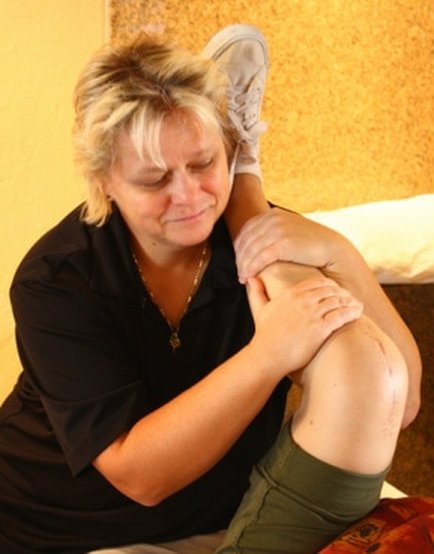A direct manual approach performed passively by the therapist in a smooth, rhythmic motion aimed at decreasing pain and/or increasing mobility. They consist of small passive movements between individual joints.
|
5 Grades of Mobilizations
Grade I - Small amplitude movement performed at the beginning of the range Grade II - Large-amplitude movement performed within the range but not reaching the limit of the range. Grade III - Large amplitude movement performed at the limit of the range Grade IV - Grade V - High velocity thrust performed at the limit of the range Effects of Joint Mobilizations
Pain relief - Stimulates mechanoreceptors to inhibit transmission of pain impulses. Mechanoreceptors are sensory receptors that respond to mechanical pressure or distortion. Receptors are found in skin, muscles and joints. Increase joint capsule extensibility - Stretches the joint capsule, breaks adhesions, alters abnormal cross-linking. Relaxation of surrounding muscles and tendons - Further improving mobility of the joint. |
Proudly powered by Weebly
